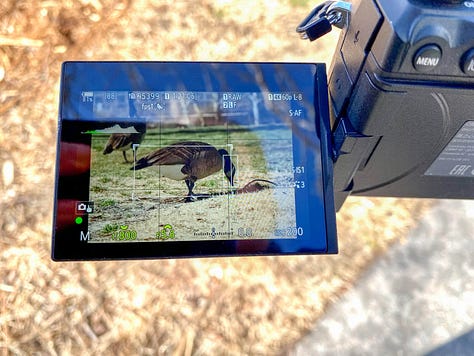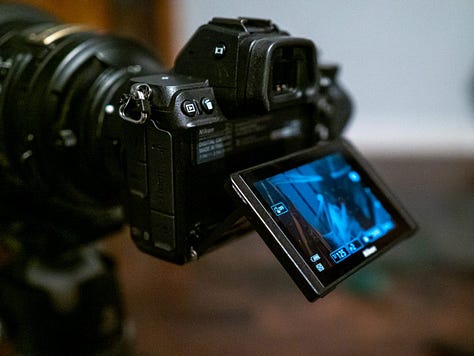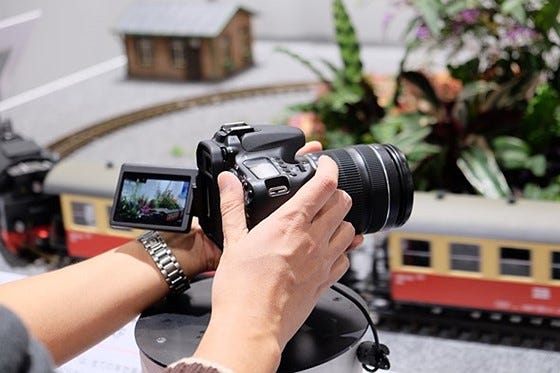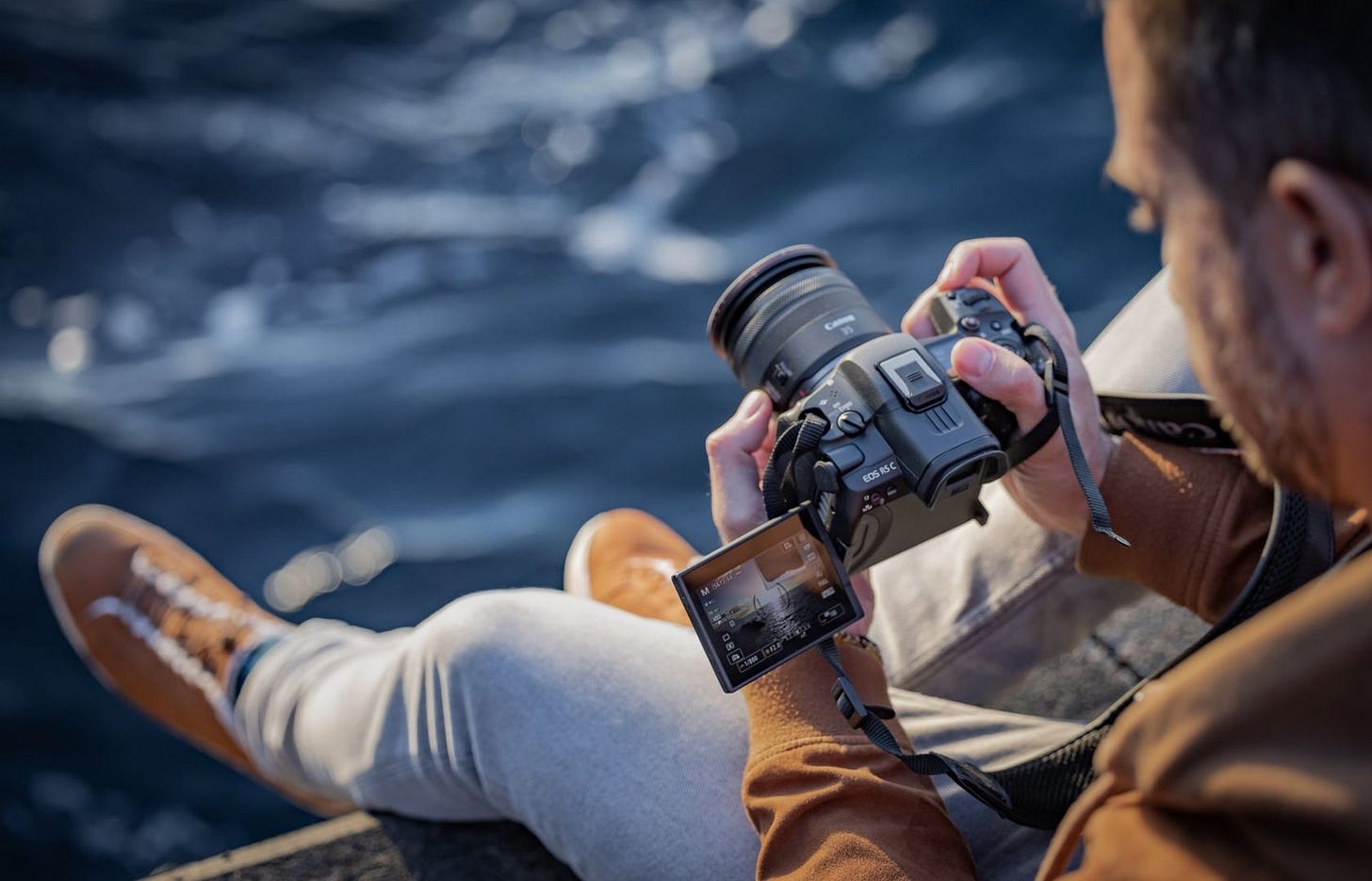Tilt vs Articulating Camera Screens: Pros, Cons & Top Models Compared
Buying a new camera and the screen design is tripping you up?
Do you want the classic flip-up screen or one that flips out to the side?
In this guide, I break down the pros and cons of tilt screens vs fully articulating screens to help you pick the right movement for your photography style.
I'll cover the main benefits and drawbacks of each type, and how they perform for different shooting situations like vlogging, macro, overhead angles, and more.
You'll also get recommendations on some of the top camera models to consider based on whether you want a tilt or articulating screen.
Whether you prioritize simplicity or crazy positioning flexibility, this comparison explains the ergonomic differences so you can buy a camera that maximizes comfort and creativity, not frustration.



What is a Tilt (Flip Up) Screen?
A tilt or flip-up screen is hinged at the bottom so you can flip the LCD vertically up or down from the camera back.
This lets you shoot over crowds, get low angles, and even compose from the waist - all while keeping the camera level for smooth panning.
The key benefit of tilt screens is maintaining the optical axis when you tilt or pan the camera.
This makes it easier to frame shots and track moving subjects without disorienting camera motions.
Tilt screens are also great for discrete shooting from the hip or getting down low for macro work.
However, tilt screens have limited flexibility for framing overhead shots or getting creative high angles.
And while some higher-end models have double-hinged tilt screens to go overhead, you still can't flip the screen forward for selfies or vlogging.
The exposed screen is also more prone to scratches when folded against the camera body.
What is a Fully Articulating (Flip Out) Screen?
A fully articulating or flip-out screen has a double hinge so the LCD can swing out to the side of the camera.
This gives you crazy flexibility to position the screen at basically any angle - overhead, straight up for buildings, selfie mode, or even folded inwards to protect it.
The key benefit of articulating screens is unrivaled positioning freedom.
You can frame from literally any angle - high or low - making it ideal for things like real estate photography of ceilings or unique vlogging angles.
And with the screen flipping forward, it's perfect for selfies and vlogging to yourself.
When not in use, most articulating screens can fold inwards to protect the LCD from scratches and damage.
The downside is the screen sticks out from the side, making it less discreet and potentially interfering with accessories or handling.
It also moves the display off the optical axis, which can make panning more difficult.
Head-to-Head: Flip Up vs Flip Out for Different Shooting
Vlogging / Selfies: Articulating screens are the clear winner here, allowing you to easily frame yourself or record vlogs to the camera.
Sony ZV-E10 (Articulating screen, compact, great autofocus)
Canon EOS M50 Mark II (Articulating screen, easy live streaming)
Fujifilm X-T200 (Articulating screen, good value)
Macro/Product Photography: Tilt screens offer a slight advantage, keeping the camera low and level for product details. But articulating screens can also get creative angles.
Nikon D850 (Tilt screen, high-resolution sensor)
Canon EOS RP (Tilt screen, lightweight full-frame)
Olympus OM-D E-M5 III (Tilt screen, in-body image stabilization)
Low Angle/Ground Shots: Both work well for getting low perspectives, but tilt screens keep you oriented to the subject.
Sony a7R IV (Tilt screen, high resolution)
Panasonic Lumix G9 (Fully articulating screen)
Fujifilm X-T4 (Fully articulating screen, rugged build)
Architecture/Buildings: Articulating screens are ideal for looking straight up at ceilings or building details.
Sony a7R V (Articulating screen, high resolution)
Canon EOS R5 (Articulating screen, excellent video specs)
Nikon Z7 II (Tilting screen, robust body)
Landscapes/Travel: Tilt screens are more discreet and easier to shoot handheld. But articulating is great for unique perspectives.
Nikon Z5 (Tilt screen, lightweight full-frame)
Olympus OM-D E-M1 III (Articulating screen, weatherproof)
Fujifilm X-T30 II (Tilting screen, compact, affordable)
Discreet Street Photography: The compact tilt screen design blends in better for candid street shots.
Ricoh GR III (Tilt screen, pocketable)
Fujifilm X100V (Tilting touchscreen, classic styling)
Sony RX100 VII (Tilting screen, 1" sensor, compact)
The Future: Innovative Hybrid Screen Designs
As the competition heats up, some companies are getting creative with hybrid tilt and swivel screen designs.
This gives you the best of both worlds - tilt functionality for low shots and panning, plus the ability to swivel out for vlogging or overhead angles.
Of course, it also adds potential points of failure and complexity.
Brands like Sony and Panasonic are experimenting with variable angle displays that tilt diagonally instead of just up/down.
These allow more framing flexibility while maintaining a sleeker profile.
So Which Screen Design Wins Out?
There's no universal winner in the tilt vs articulating screen debate.
It ultimately comes down to prioritizing different shooting needs and ergonomic preferences.
Tilt screens offer simplicity, discretion, and ease of use while maintaining the optical axis for panning.
This makes them a great choice for traditional photographers, particularly those doing handheld shooting like street, travel, or even macro.
Fully articulating screens sacrifice some discretion and handling but provide unbeatable flexibility for framing at creative angles.
This makes them ideal for vloggers, real estate photographers, adventurous videographers, and anyone who values unique perspectives over a streamlined shooting experience.
And if you want the best of both worlds, keep an eye out for new hybrid tilt/swivel designs - but be prepared for added cost and complexity.
And That’s It
When buying your next camera, consider the screen design and how it could impact your shooting experience.
Is maximum adjustability a must-have for vlogging or funky angles?
Or do you value a sleeker shape for handheld photography?
There's no one-size-fits-all, but understanding the ergonomic differences is key.
I hope that helps.
-Hakan.






